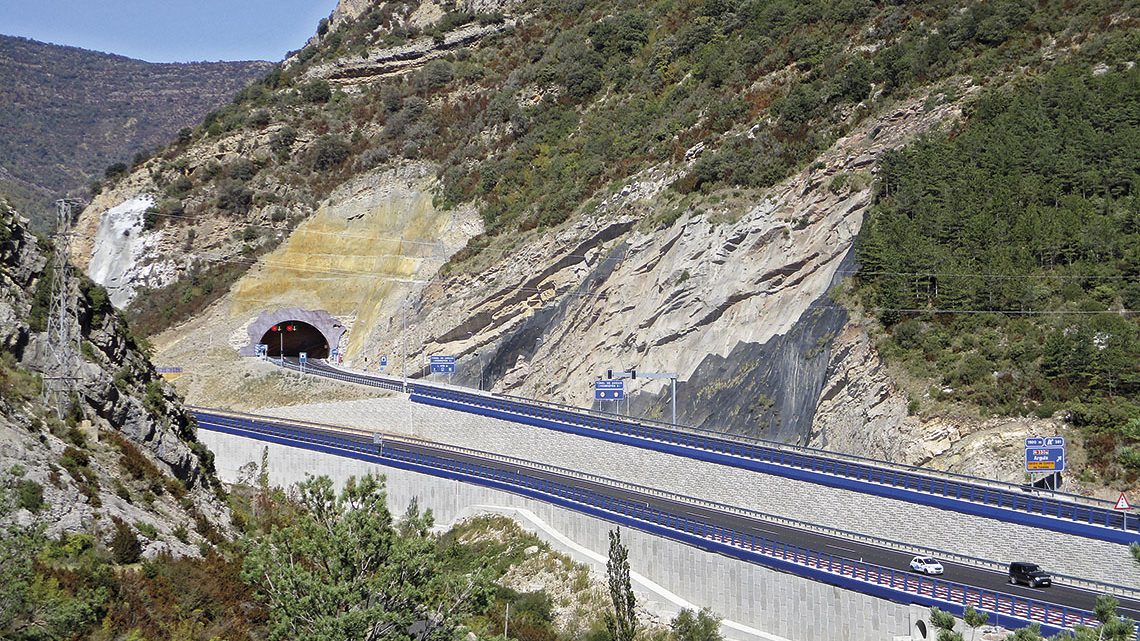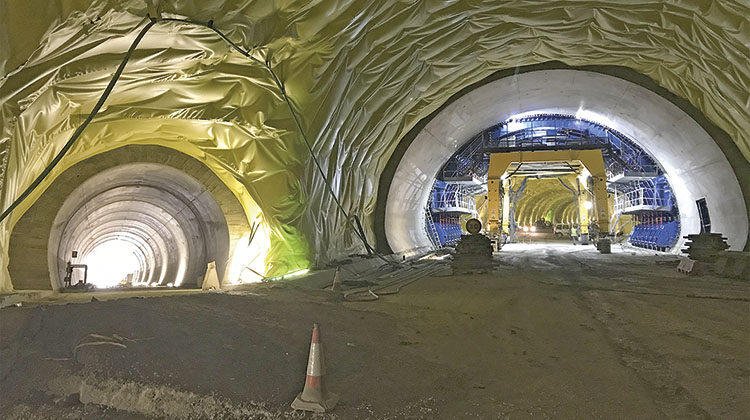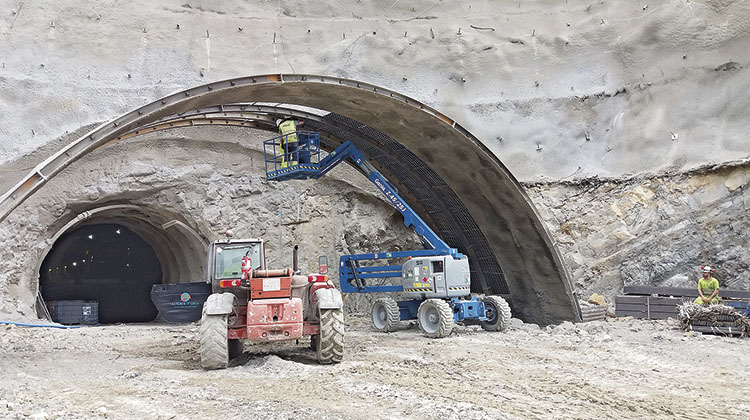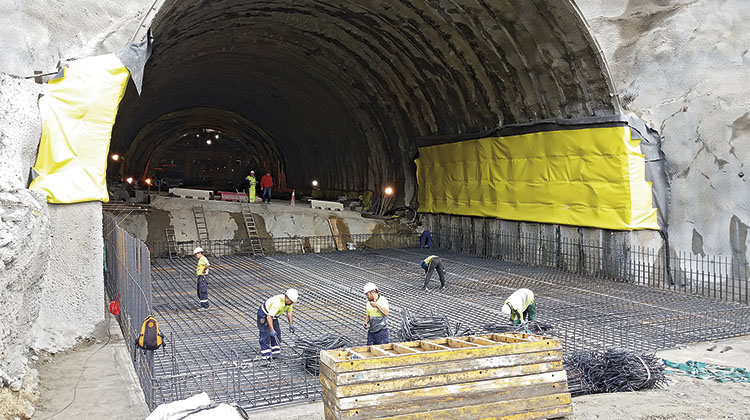The Ministry of Public Works opened the Huesca A-23 (E-07 for Europe) stretch of the Mudéjar highway in October 2019. Ineco provided technical assistance and supervised the project’s environmental monitoring programme. Thanks to this and other works, the full length of the Monrepós mountain pass can now be traversed on a highway, reducing travel times and increasing safety levels.
Construction of the A-23 to connect the Mediterranean coast to the French border began in 1999. The road starts in Sagunto, Valencia, and runs for 435 kilometres (413 of which are now in service), to Jaca in Huesca. Partially new construction and also taking advantage of the existing alignment, the A-23 follows the corridors cut by the N-234 (to Retascón, Zaragoza) and the N-330, which crosses Aragón and connects to the Somport tunnel (Huesca) to pass through the Pyrenees.

ARGUIS INTERCHANGE. The section includes the Arguis trumpet interchange, which provides access to the new Monrepós Tunnel Control Centre, the town of Arguis and the Nocito Valley located within the Parque Natural de la Sierra y los Cañones de Guara.
In the year 2000, the A-23 was extended to the capital of Huesca. Due to the challenging geology of the terrain and, in particular, the Monrepós mountain pass which, at 1,262 metres above sea level is the highest in the Huesca Pyrenees, the final stretch to Jaca was the last to be completed. For this stretch, in 2019, the Ministry of Public Works in conjunction with the Aragón State Highways Division, opened three new sections of road, which means it is now possible to travel the entire 39-kilometre stretch between Huesca and the Monrepós pass on a highway.
The sections in service are: Alto de Monrepós-Caldearenas, Caldearenas-Lanave, and also, since October 2019, the 3.3 kilometres between Congosto de Isuel and Arguis. The contract to build this last section was awarded to FCC, and work began in May 2007. Since April 2016, Ineco has been providing technical assistance to FCC’s construction management team, for the supervision and monitoring of the works. The works posed considerable technical difficulties for several reasons, not the least of which was the geotechnical complexity of the geography, which, among other things, gives the entire route a downward gradient of between 4% and 7%.
Now that the new sections of the A-23 are operational, only the 30.4 kilometres of the Lanave-Sabiñánigo section and the Sabiñánigo and Jaca bypasses remain uncompleted. The Ministry of Public Works has stressed the significance of the new road axis which, together with the A-21 (Pamplona-Jaca) and A-22 (Huesca-Lleida) highways, gives traffic travelling between the Cantabrian coast and Catalonia an alternative to the Ebro valley. When the work is finished, the travel time between Castellón and the Atlantic coast will be about six hours.
The new section of the Congosto de Isuela-Arguis highway was constructed with new infrastructure, including a tunnel more than 900 metres long on the ascending carriageway (direction Huesca-Jaca). However, whenever possible, the descent takes advantage of the existing corridor (the N-330). The cross-section of the highway consists of two carriageways with two 3.5-metre lanes, separated by a narrow median strip measuring between 1.2 and 2 metres in the sections with parallel carriageways, a 1-metre inner hard-shoulder, a 2.5-metre outer hard-shoulder, and 0.75-metre lateral berms.
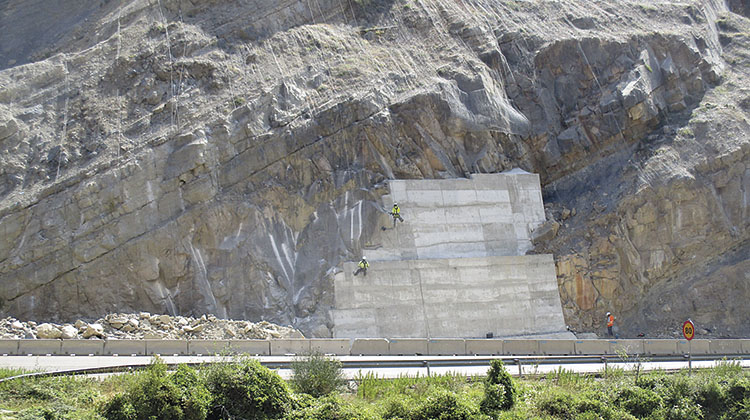
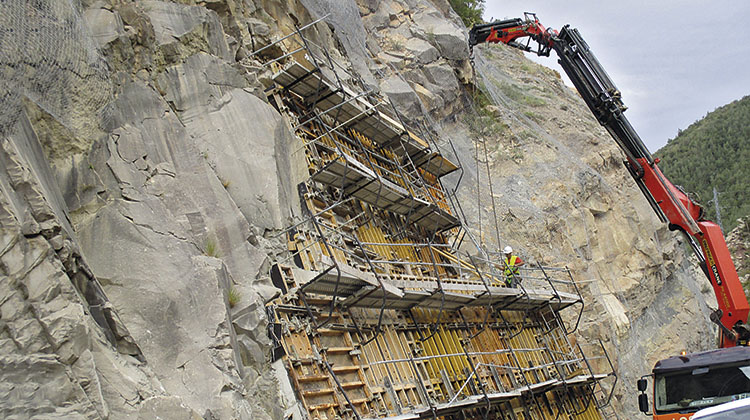
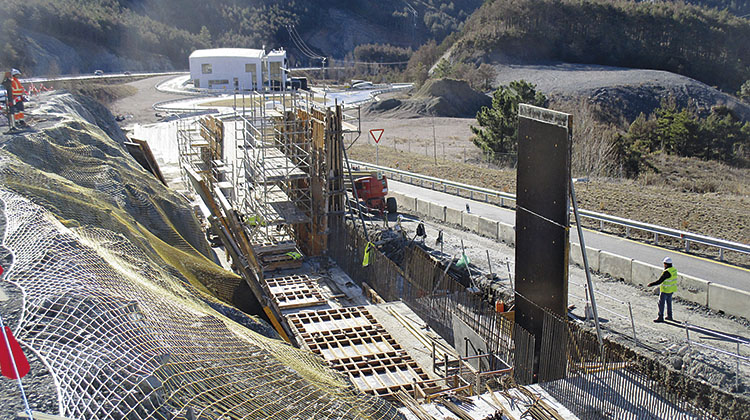
Viaducts and other structures
The difficult alignment required the construction of numerous structures: six viaducts, two walkways, a reinforced concrete wall and six reinforced soil walls.
In addition, three bridges of the N-330 built over the Isuela River in 1982 were repaired and adapted. They showed a significant degree of deterioration due to several different causes, but mainly due to a combination of poor drainage and exposure to salt used as a melting agent.
Embankment reinforcement
Another notable aspect of the new section’s construction was the reinforcement of slopes and embankments with stability issues resulting in fractures and frequent occurrences of falling debris (stones and metre-sized blocks). The problem was addressed with more than 60,500 m2 of triple-twisted wire mesh netting anchored with bolts and Californian drains (drainage pipes inserted into the rock). Additionally, the project required more than 7,600 metres of soil walls, the reinforcement of unstable soil with a total of 53 buttresses formed by 265 piles, and static and dynamic barriers three and four metres high, respectively.
The new road axis, together with the A-21 (Pamplona-Jaca) and A-22 (Huesca-Lleida) highways, gives traffic travelling between the Cantabrian coast and Catalonia an alternative to the Ebro valley
Double drainage system
In sections where the highway runs almost parallel to the Isuela river, the Environmental Impact Statement (EIS) dictated that waters should be handled differently depending on their origin. For this reason, a double longitudinal drainage system was installed. Clean run-off from the embankments is diverted into a ditch in a clearing and drains directly into the river; dirty water that accumulates on the carriageway flows into a curb collector, central ditch and lateral gutter between the roads, with degreasing and settling tanks to prevent pollutants from reaching the river.
Principal works: The Arguis Tunnel
The most significant feature of the section is the 920-metre long Arguis tunnel. The carriageway comprises two 3.5-metre lanes, a 1-metre inner hard-shoulder, a 2.5-metre outer hard-shoulder and two 0.75-metre walkways. In addition, given the steep downward gradient of the area, an additional 2-metre safety area was added to the outer hard-shoulder as a supplementary measure.
The tunnel was built using the new Austrian tunnelling method. The method consists of excavation (in this case using blasting and mechanical means) immediately followed by the construction of a flexible support. Depending on the geomechanical characteristics of the terrain, four types of support sections were constructed using anchor bolts, gunite (shotcrete reinforced with fibres to increase its load capacity), trusses and a systematic concrete tunnel invert.
The tunnel has three evacuation galleries (measuring 171, 146 and 153 metres, respectively) which provide access for ambulances and small emergency vehicles. In addition, all the of the facilities required for the proper functioning of the tunnel were installed: lighting, ventilation, fire detection and protection systems, electrical connection, signalling, traffic lights, variable information panels, a video monitoring and surveillance system, public address system, SOS posts, height clearance control and a collection system for hazardous spills.


